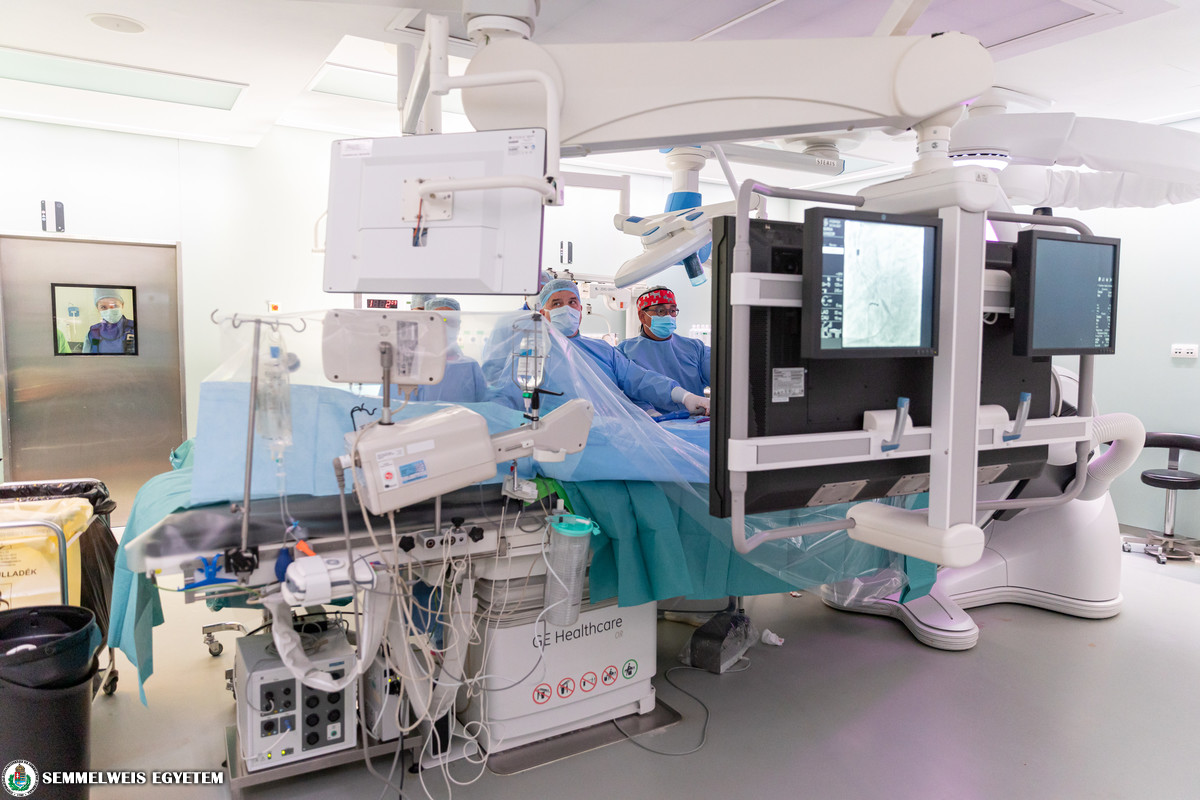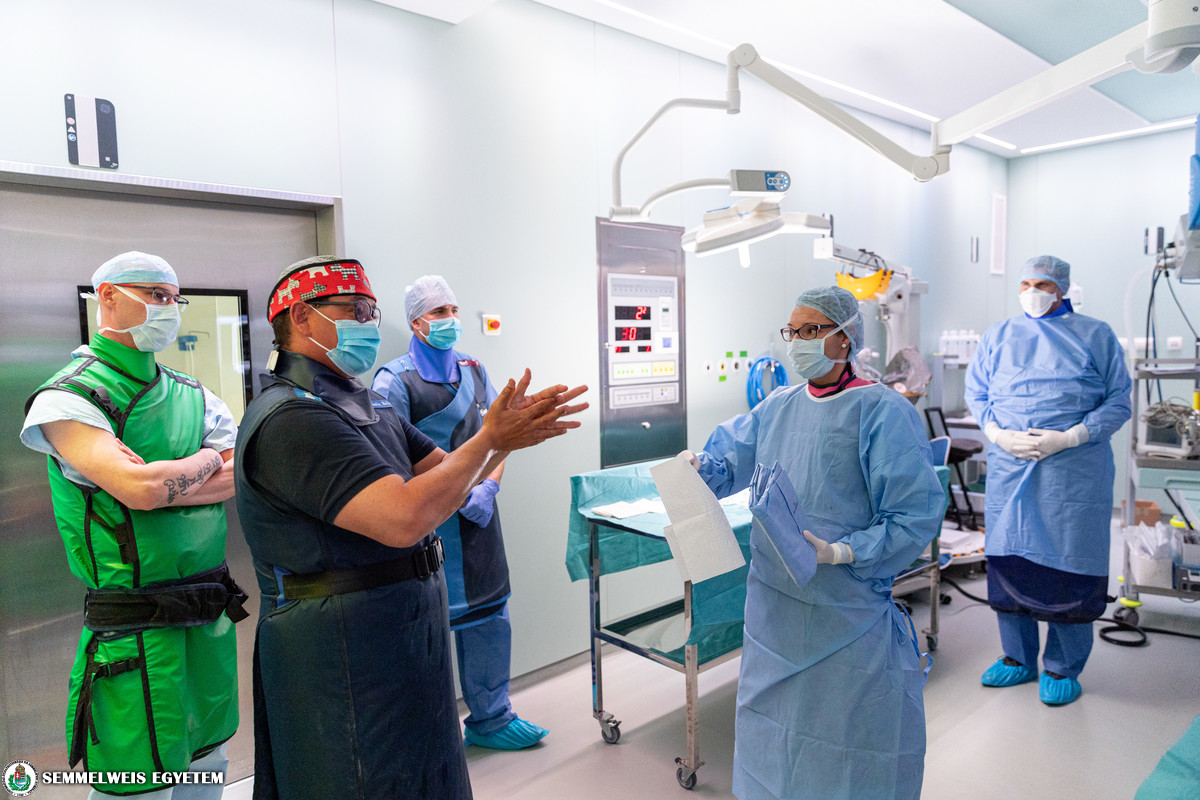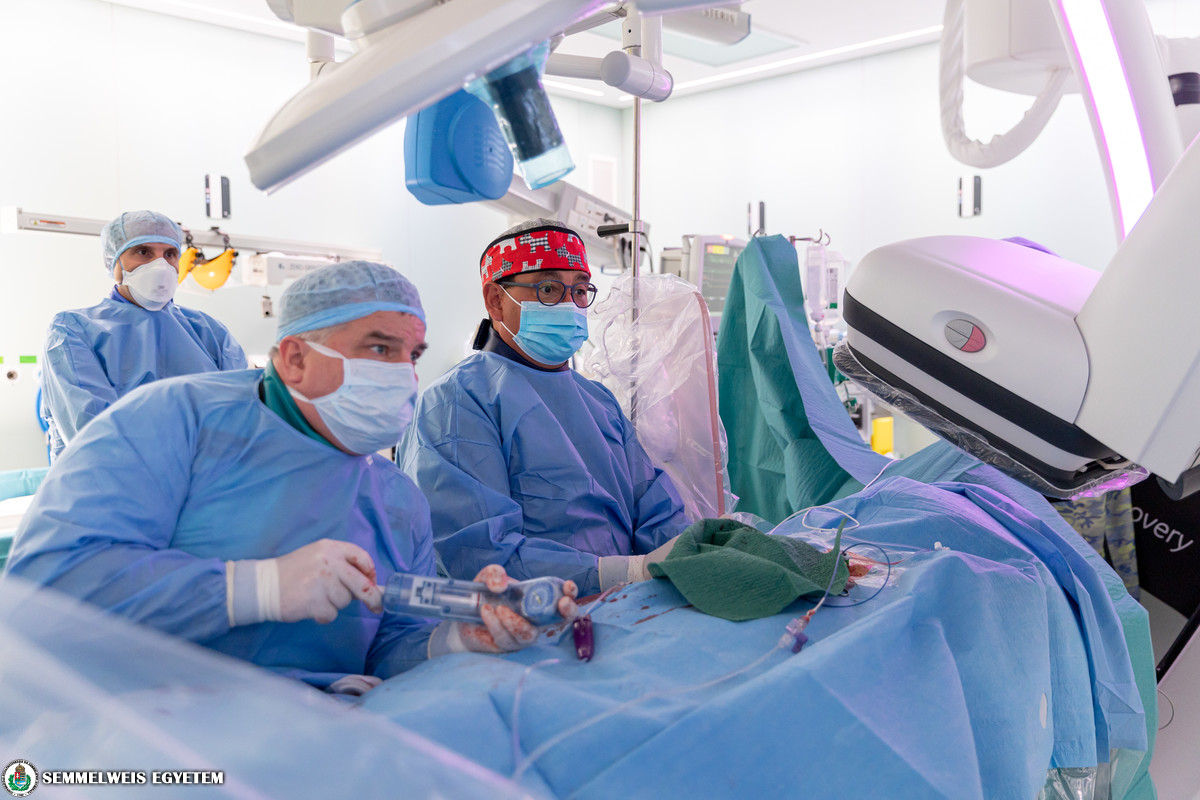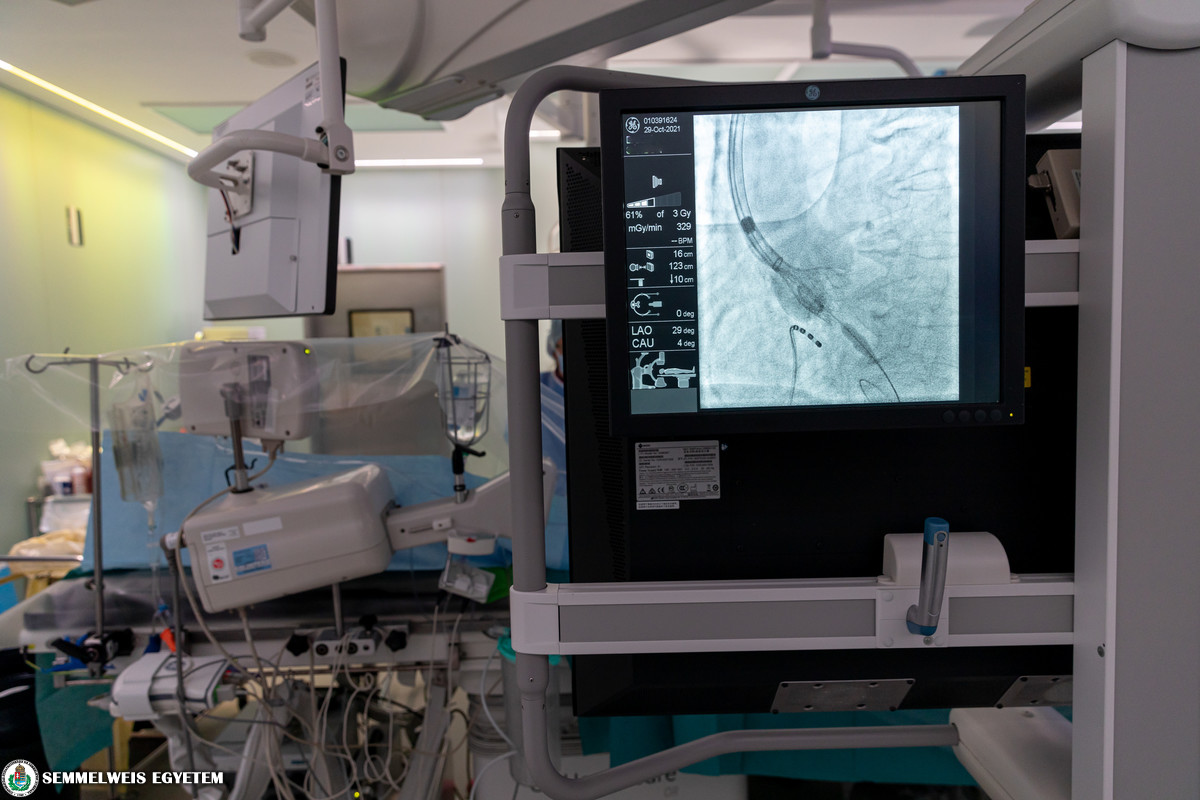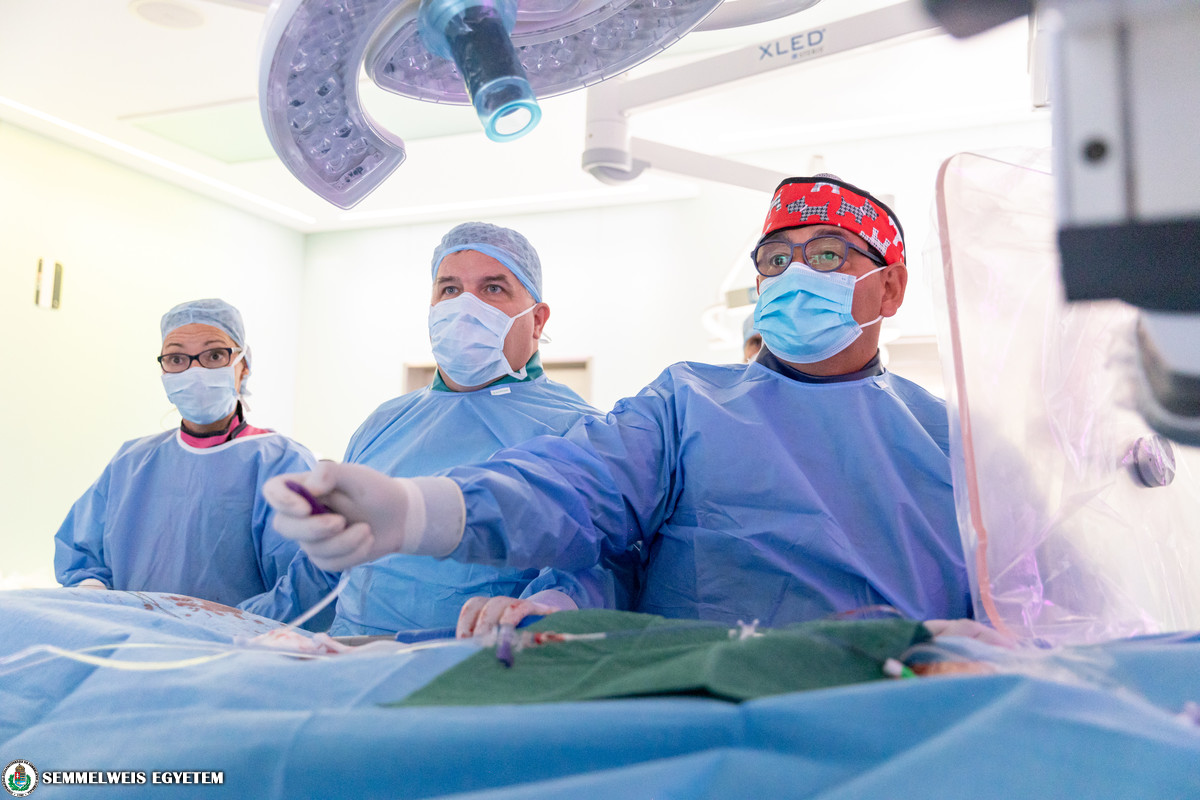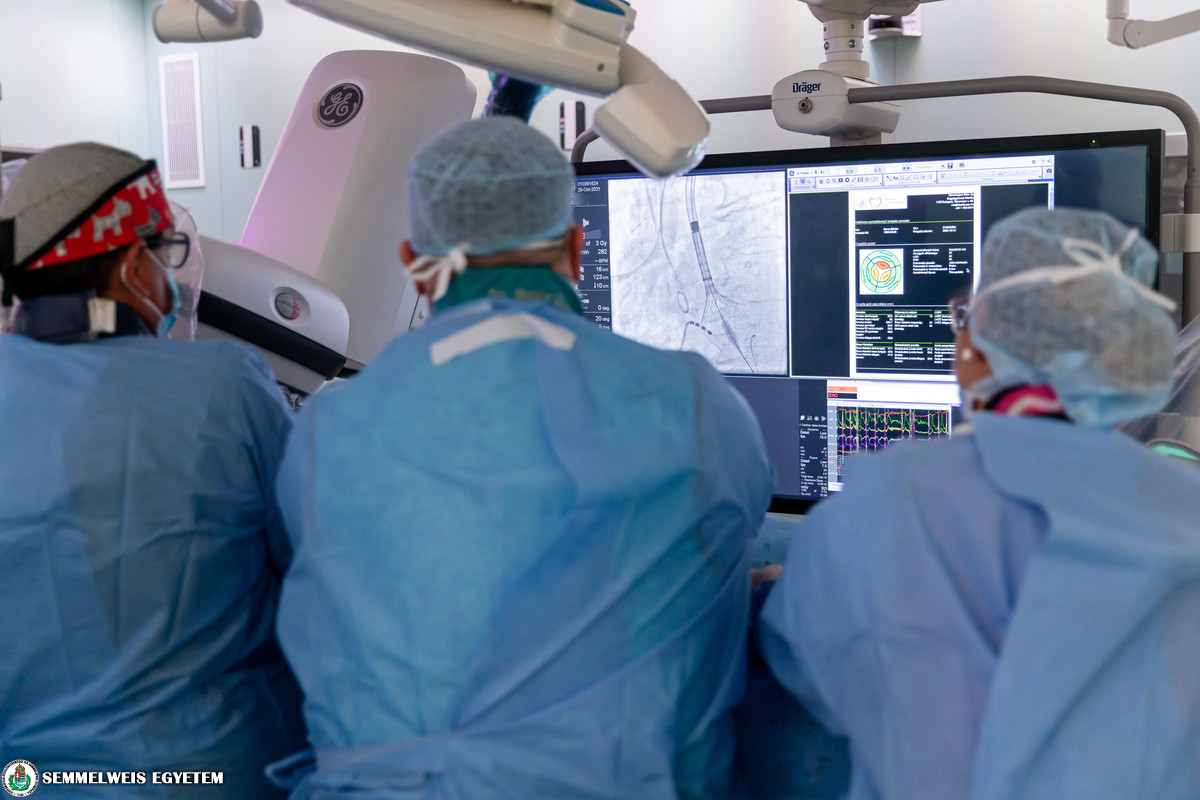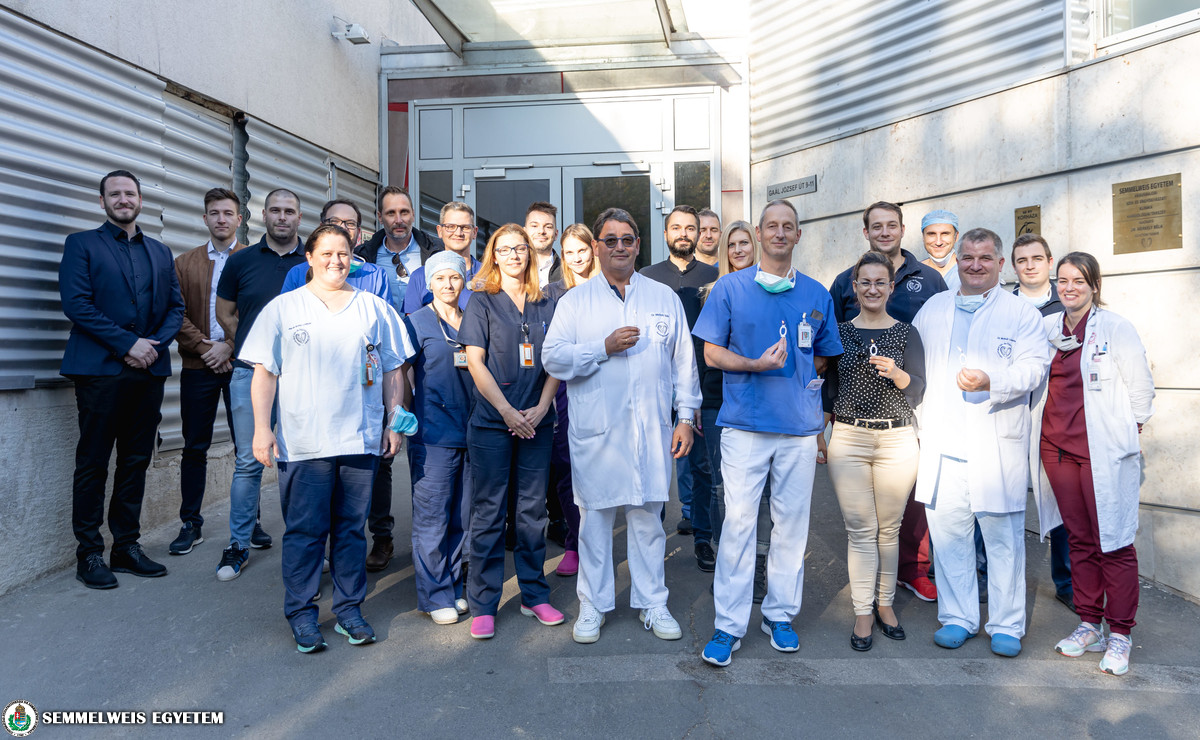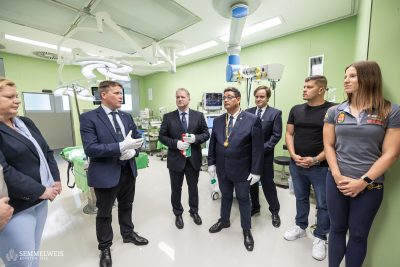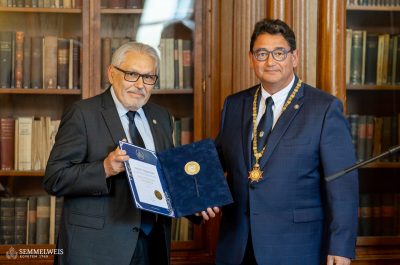Specialists at Semmelweis University successfully completed the 1000th transcatheter aortic valve implantation (TAVI) on a 79-year-old patient with chronic arrhythmia at the Heart and Vascular Center of Semmelweis University. The procedure performed by rector dr. Béla Merkely and dr. Levente Molnár, assistant lecturer of Semmelweis University. As people age, an open-chest surgery may have a higher risk in patients than the TAVI procedure, where local anesthesia is used. During the procedure, the artificial valve is inserted into its position with the help of an approximately one-meter-long catheter.
Aortic stenosis remains one of the most common, non-congenital heart valve diseases. Its prevalence increases in aging patients, as it is caused by degenerative calcification, which is calcium buildup making the valves narrower. Therefore, the heart chamber must work harder to pump blood through the narrow valve opening. Dysfunction of the valves may cause fatigue, asphyxia, patients may feel weak and have difficulty breathing. Further signs and symptoms may include loss of consciousness and in the most severe cases patients face a higher risk of a sudden cardiac death.
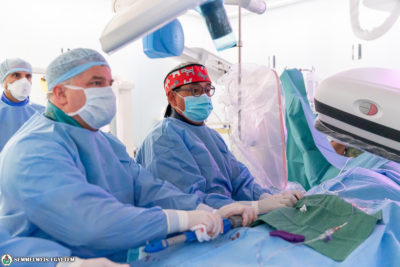 Previously, valve replacement procedures were performed using the traditional open-chest surgery on a fully anesthetized patient. However, the risk of this surgery for patients in the most affected age-group is substantially higher due to pre-existing comorbidities. The transcatheter aortic valve implantation is considered to be a safer option for them, as it can be done under local anesthesia with the patient awake throughout the operation.
Previously, valve replacement procedures were performed using the traditional open-chest surgery on a fully anesthetized patient. However, the risk of this surgery for patients in the most affected age-group is substantially higher due to pre-existing comorbidities. The transcatheter aortic valve implantation is considered to be a safer option for them, as it can be done under local anesthesia with the patient awake throughout the operation.
The 1000th TAVI operation was carried out by rector dr. Béla Merkely and dr. Levente Molnár, assistant lecturer on 29 October 2021 at the Heart and Vascular Center of Semmelweis University.
“The rate of Transcatheter Aortic Valve Implantation surgical procedures continues to increase ever since the first successful implantation at the Heart and Vascular Center in 2011. Approximately 200 surgeries are performed each year to help patients. We can have as much as 5-6 surgeries on a daily basis,” added rector dr. Béla Merkely.
The 1000th procedure was performed on a 79-year-old patient with chronic arrhythmia.
The successful 1000th surgery is a significant achievement even on an international level, indicating that the Heart and Vascular Center’s outstanding performance stands at the forefront of modern medical technologies.
– pointed out dr. Merkely. He also added that procedure number 1000 was an especially difficult one, as the patient had extensive calcification in the affected valve. The implantation requires expertise, a lot of practice and precise and professional cooperation between the members of the surgical team.
To perform a Transcatheter Aortic Valve Implantation, a 110 centimeter long catheter is inserted into femoral artery through a small incision in the groin area and is guided into the heart. A replacement valve is passed through the hollow catheter and placed in the area of the left aortic valve. The exact location of the new valve is determined by X-ray. Dr. Levente Molnár added that the so-called biological artificial valves to be implanted are made using swine or bovine pericardium (pericardial sac). This tissue is extremely durable, which is necessary as heart valves open and close hundreds of thousands of times a day.
Pálma Dobozi
Photo: Attila Kovács – Semmelweis University
Translation: Norbert Lukács
